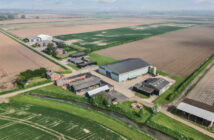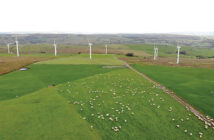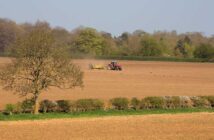Diversification has to be a consideration for rural estates with slow economic growth and high inflation rates suggests Carter Jonas
The consultancy’s Model Estate report tracts various asset classes over 12 months to show how mixed-managed enterprises perform. This has shown that income diversity remains key for financial performance, especially in times of political and economic uncertainty.
In the latest report, the figures have been applied to a notional 3,168-acre mixed estate, with the results showing that non-farming income is integral.
For the year to December 2023, the estate was valued at £51.54m – a 2.8% increase year on year. Breaking it down into individual enterprises, the solar farm saw an 18.6% increase in value, with a new 100MW storage system installed to deliver power at peak times.
Agricultural land, which makes up 56.6% of the total value, saw healthy gains across the year, split across in-hand and let farmland.
“While growth has decelerated year-on-year, the trend remains positive,” says Tim Jones, Carter Jonas’ head of Rural Division.
“Annually, average arable land values have risen by 1.6% and average pasture land by 2.0%. This compares to 6.4% annual growth for arable land and 4.4% for pasture land a year earlier, a period defined by a particularly tight market with very limited supply.”
The company believes that the deceleration in growth indicates a well-balanced market.
“While greater supply is creating more choice for buyers, and so tempering price growth, there is still a healthy level of interest driving activity,” says Sophie Davidson, senior research analyst.
“Commercial farming businesses, especially those who are largely cash-rich with less need for finance, remain a driving force in the market. This is complemented by a growing presence of natural capital buyers and the continued presence of rollover buyers who have used Business Asset Rollover Relief and are yet to reinvest in another asset.”
The General Election was a key talking point but did not disrupt the market, with the industry now hoping for a period of stability.
“The Labour party, despite its relative lack of specific policy initiatives for farming, has pledged its commitment to making the Environment Land Management scheme (ELMs) work and has not stated immediate intentions to change the tax regime, although key tax reliefs affecting those with rural businesses and property are anticipated to come under scrutiny in time,” Tim says.
“While some economic concerns remain, positive signs are emerging. Inflation, as measured by CPI, aligned with the Bank of England’s 2% target rate in May, suggesting a more optimistic outlook. Although current interest rates continue to be a factor in business decisions about buying or selling, inflation is forecast to remain close to the 2%, paving the way for interest rate cuts in the near future.”




